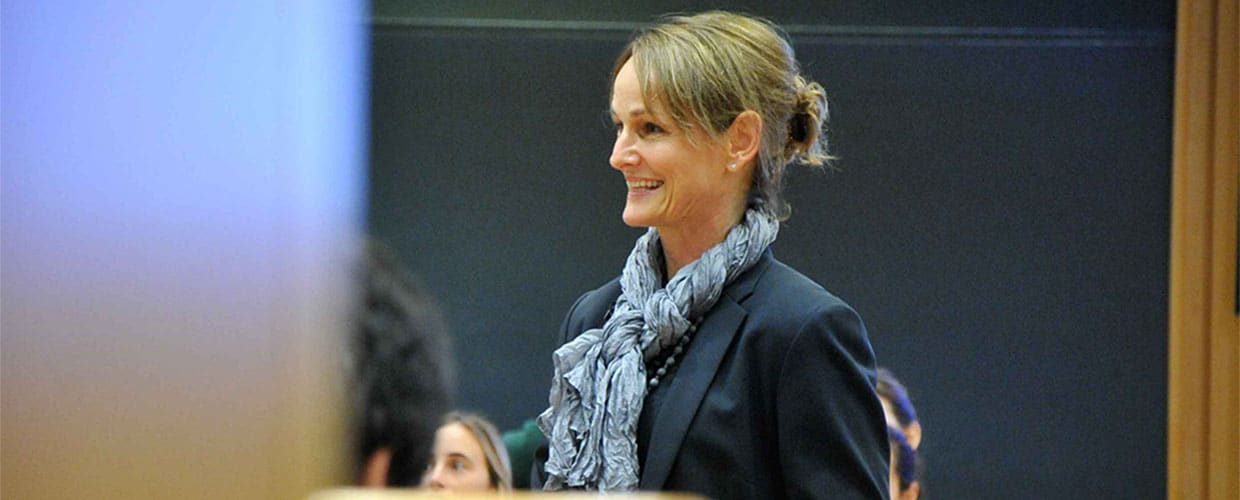Claudia Zeisberger, a professor focused on private equity at French business school INSEAD, discusses her work and how a new generation entering private equity might change the industry.
Last year you published Mastering Private Equity: Transformation via Venture Capital, Minority Investments and Buyouts. Who is the book for and why was it needed?
The target audience for the book is my students at INSEAD, young professionals in the industry, and senior executives who are either considering going into private equity or who are working with private equity firms – for example, board members at businesses engaging, or potentially engaging, with private equity.
There was a need for a structured look at private equity, rather than the haphazard conversations about it that have often been taken out of context. I wanted to produce a book that is well-structured, can be read from front to back, or can be jumped into when you want to read about leverage buyouts, or how venture capital investments are priced, or turnarounds, or secondary investments.
Did private equity’s increasing complexity play a part in your decision to publish the book?
Absolutely. Private equity has grown as an asset class – industry AUM is now several multiples of what it was in 2000 and there is no other asset class that has grown in such leaps and bounds.
It has also diversified. Private equity firms originally did mainly buyouts and venture capital, and a little bit of growth equity. Nowadays, they might do infrastructure, real estate, distressed assets and secondaries.
Have these changes affected how students are taught about the private equity industry?
We have added more electives. We have a general private equity elective, and also ones focusing on LBOs, turnarounds and stressed investing, which is highly popular with the students.
Then there are multiple electives on the entrepreneurial side, both from a venture capitalist point of view, but also taking the entrepreneur’s angle on starting a business, bootstrapping it, and then deciding whether or not to raise funding. There is a lot of interest in this area.
Junior private equity professionals may help the industry become digital, something you have said that it needs to do. How well are firms doing?
There are two changes of this type that we need to follow. First, how private equity firms are conducting their selection process using a data-driven approach. Here I think there is work being done. Different firms have reached different levels of use.
There are also some new firms coming out who are using data much more. I recently worked with two INSEAD alumni who came up with a new approach to allocating early stage venture capital and have now started to invest on this basis, which is very different to how firms have traditionally invested.
Second, how the private equity GP/LP model is changing. LPs are asking more and more for customised portfolio solutions and are less willing to jump into a blind pool structure.
Technology can play a role by helping GPs to come up with new solutions that are acceptable to an LP. The desires of LPs will have a tremendous impact on how the industry will evolve. He who has the money writes the rules.
Another change occurring in private equity alongside generational shifts is an increased interest in social impact investing, to which a chapter in your book is devoted. How significant do you think social impact investing will become in private equity?
The first conversation I had about social impact investing was with a group of students in 2009 who said they wanted to do some work on it. Now I see this conversation come up very frequently. At INSEAD we did our first research in this area in 2012, and in the last six months I have had several emails from people who wanted to talk about it. Conversations around social impact investing have been happening for some time but what we have not had until now is interest from LPs.
I think the goals of doing good and making a financial return are aligned. Ensuring that your company does not endanger the community it operates in has a sure impact on the bottom line. In addition, today’s younger generation of consumers will be asking more questions around this topic – how a product was produced, how it can be disposed of – so a focus on social impact will have good externalities around it.
But I am a little bit concerned about the social impact afterparty. What if a social impact result is not in line with expectations that investors have? Private equity will have to be careful to deliver on the promise of social impact.
INSEAD will hold its 16th annual Private Equity & Venture Capital Conference on 25 May at its Fontainebleau campus near Paris. See INSEAD’s website for tickets and further information.




